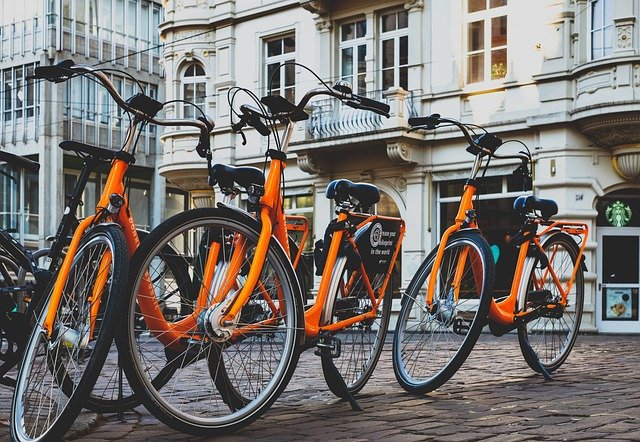Pedal-Powered Tourism: Exploring Cities on Two Wheels
Imagine gliding through narrow cobblestone streets, feeling the pulse of a city with every pedal stroke. Bike tourism is revolutionizing the way travelers experience urban landscapes, offering a unique blend of exercise, exploration, and eco-friendly transportation. This growing trend is reshaping cityscapes and travel habits worldwide, providing an intimate connection to local culture that traditional modes of transport simply can't match.

Bike-Sharing: A Game-Changer for Tourists
The proliferation of bike-sharing systems has been a catalyst for the bike tourism boom. These programs allow visitors to easily rent bicycles for short periods, providing a flexible and affordable way to navigate cities. From Paris’s Vélib’ to New York’s Citi Bike, these systems have become an integral part of urban transportation networks. For tourists, they offer the freedom to explore at their own pace, without the hassle of navigating public transit or the expense of taxis.
Guided Tours: Pedaling Through History
While independent exploration is appealing, guided bike tours have emerged as a popular option for those seeking a more structured experience. These tours combine physical activity with cultural immersion, often led by local experts who can provide insights into a city’s history, architecture, and hidden gems. From food-focused rides through culinary hotspots to nighttime tours showcasing city lights, these guided experiences cater to diverse interests and skill levels.
The Economic Impact of Bike Tourism
The rise of pedal-powered tourism has had a significant economic impact on cities embracing this trend. Local businesses along popular cycling routes have seen increased foot traffic, and new enterprises catering specifically to cyclists have emerged. Bike rental shops, repair stations, and cyclist-friendly cafes are just a few examples of the economic ecosystems developing around this form of tourism. Additionally, cities investing in cycling infrastructure have reported benefits such as reduced congestion and improved air quality, further enhancing their appeal to visitors.
Challenges and Considerations
While the benefits of bike tourism are numerous, it’s not without challenges. Safety concerns, particularly in cities with limited cycling infrastructure, can be a deterrent for some travelers. Weather conditions and terrain can also impact the feasibility of cycling in certain destinations. Moreover, the influx of cyclists in popular areas has led to conflicts with pedestrians and motorists in some cities, highlighting the need for careful urban planning and education.
Pedal-Powered Insights
• Always check local traffic laws and cycling etiquette before renting a bike in a new city
• Consider electric bikes for hilly terrains or longer distances to make your journey more comfortable
• Look for bike-friendly accommodations that offer secure storage or rental services
• Download cycling apps that provide route suggestions and real-time navigation
• Pack lightweight, breathable clothing suitable for cycling, even if biking isn’t your primary travel plan
A New Perspective on Urban Exploration
Pedal-powered tourism offers a unique lens through which to experience the world’s cities. It combines the freedom of independent travel with the intimacy of slow tourism, allowing visitors to engage with their surroundings in a more meaningful way. As more cities adapt to accommodate and encourage cycling, the future of urban exploration looks bright—and decidedly two-wheeled. Whether you’re a seasoned cyclist or a curious traveler, exploring a city by bike provides an unparalleled opportunity to connect with the rhythm of urban life and discover hidden treasures around every corner.





